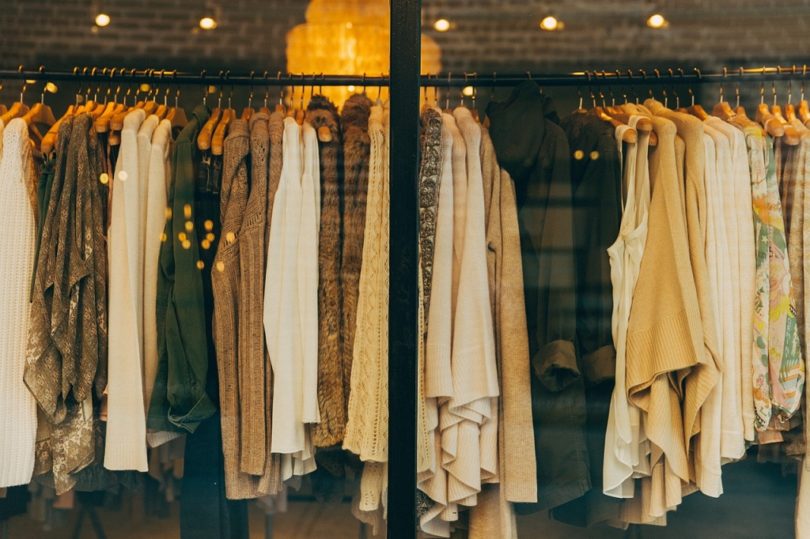The Rise of Online Shopping: Finding Boutique Fashion at Your Fingertips
The Rise of Online Shopping: Finding Boutique Fashion at Your Fingertips
Blog Article
A Deep Dive Into the World of High-Fashion Runways: Comprehending Clothing as Art
Developers, much like masterful musicians, weave intricate stories via textile, kind, and color, redefining and testing standard standards beauty standards. As we discover these sartorial spectacles, we must contemplate: what function does style play in forming social values, and just how does it mirror the ever-changing tapestry of human emotion and identity?
The Development of Runway Shows
The trajectory of runway programs has changed dramatically over the years, progressing from unique market occasions to captivating spectacles that mix style with art. Generally, runway shows were intimate events, held in ateliers or small locations, mostly gone to by purchasers and sector insiders. These early presentations focused on the garments' craftsmanship and commercial feasibility, using a useful and direct display of seasonal collections.
As the apparel industry increased, the nature of runway programs started to alter. The 1970s and 1980s noted a turning point, with designers looking for to identify themselves through more theatrical presentations. This age saw the rise of sophisticated sets, choreographed versions, and thematic stories, advertising a brand-new age where the path came to be an experiential system. The programs transformed right into a kind of narration, where each collection communicated a distinct narrative or idea.
In the last few years, modern technology and social media sites have further transformed path shows, making them available to a global target market. Livestreaming and electronic platforms have actually equalized fashion, allowing lovers worldwide to witness these events in real-time (boutique fashion). This development reflects a wider social change, where high-fashion paths serve as a dynamic crossway of style, advancement, and performance
Designers as Enthusiast Artists
Exactly how have designers transcended their roles to become visionary musicians? Developers in the high-fashion market have obscured the lines between practical garment production and the theoretical world of art. This improvement is noticeable in the method they approach their collections, not simply as clothing yet as extensive expressions of identity, feeling, and culture. By welcoming creative disciplines such as sculpture, paint, and avant-garde installments, designers craft garments that test conventional style norms and elevate them to art types.
Visionary designers draw ideas from a myriad of sources, including abstract art, historic references, and personal stories. They have an unique capability to envision and materialize ideas that press the limits of standard fashion, commonly redefining aesthetic paradigms at the same time. This imaginative ingenuity is showcased with remarkable shapes, innovative materials, and complex workmanship, which invite audiences to experience style as greater than simply wearable items.
Furthermore, the runway offers as a canvas for these musicians, where lights, music, and set style coalesce to produce immersive experiences. These discussions are not merely displays of clothing but are orchestrated performances that evoke emotion and provoke thought, verifying the developer's duty as a real musician in the modern social landscape.
Social Impacts in Style
Cultural tapestry weaves its intricate patterns right into the textile of style, influencing official site designers globally. The vibrant interchange of social stories, traditions, and signs notifies and inspires collections that poise high-fashion paths.
The influence of society on fashion is often seen in the reinterpretation of typical garments and patterns. For example, using Japanese bathrobes, Indian saris, or African prints in contemporary style reflects a blend of social authenticity and modern-day looks. Developers such as Valentino's Pierpaolo Piccioli and Alexander McQueen's Sarah Burton have been understood to include rich social concepts into their couture collections, equating background into wearable art.
Advancement in Textile and Layout
Technology in material and layout constantly reshapes the landscape of high-fashion, pressing borders and redefining possibilities. Designers are increasingly exploring the combination of innovation, such as 3D printing, which permits for the creation of intricate frameworks that were formerly unbelievable.
The fashion sector is seeing a rise in the usage of environmentally friendly materials, obtained from recycled plastics, natural fibers, and even naturally degradable elements. Designers are welcoming these products to craft garments that are both aesthetically striking and conscious of their environmental footprint.
In terms of style, progressive silhouettes and experimental forms are continually transforming the path. By including unconventional materials and click here for info cutting-edge methods, developers grow garments that obscure the line in between fashion and art, setting new standards for creativity and expression in the high-fashion ball.
Influence of Style on Culture
Style wields a profound impact on society, offering as both a representation of cultural identification and a driver for social change (boutique fashion). With its evolution, style has mirrored social changes, encapsulating the zeitgeist of numerous eras.
Moreover, style has the power to bridge cultural spaces, fostering understanding and admiration among varied groups. As globalisation increases, the cross-cultural exchange of style concepts becomes significantly considerable, advertising inclusivity and diversity. The surge of streetwear, originating from city subcultures, shows how fashion can go beyond socio-economic boundaries, granting people a means of self-expression and empowerment.
Fundamentally, style is not simply concerning looks; it is a dynamic force that affects values, mindsets, and social progress (boutique fashion). By constantly interacting with social and social currents, style remains an indispensable part of the collective human experience

Final Thought
High-fashion paths work as vibrant sectors where apparel goes beyond functionality to become an expressive art form. Designers, akin to visionary artists, orchestrate collections that reflect identity, feeling, and social stories, testing typical aesthetics. The fusion of innovative fabric and design, paired with intricate collection layouts, lights, and songs, produces immersive experiences that celebrate cultural diversity. This junction of style and creativity not only captivates audiences worldwide however also influences social assumptions and advertises a deeper admiration for multiculturalism.

Social tapestry weaves its detailed patterns into the material of style, affecting developers worldwide.Fashion possesses an extensive influence on society, serving as both a representation of social identification and a catalyst for social change.
Report this page